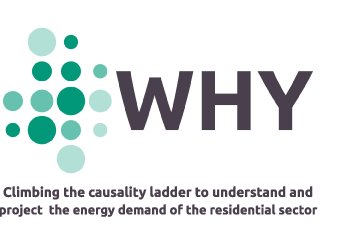Better energy planning for urban neighbourhoods
Recommendations for local and regional policy makers

Energy system models (ESMs) are a set of mathematical equations that describe the energy system. Experts use these models to describe how changes in energy systems impact on society. Nevertheless, current ESMs lack accuracy simulating the residential sector due to the large diversity of buildings. The European research project called “WHY”, financed by the European Union’s Horizon 2020 programme, developed a causal model to analyse people‘s day-to-day decisions when using energy at home. The European research team uses this causal model to understand people’s reactions to changes introduced in the energy market such as tariff changes, new taxes, rebates, changes in building codes, etc. These developed tools have been used to improve:
- the assessment of household electricity consumption trends
- the knowledge of user behaviour in the modelling community
- the operation and planning of the energy distribution system
The WHY-Consortium recommends changing planning routines from using standardized consumption values for residential consumers when assessing cities or municipalities to individual consumption values. (...) the WHY-Toolkit is used to provide more detailed data for the planning of a neighborhood in the German city of Maintal. The results indicated that the use of standardized consumption behavior overestimated the thermal energy demand for heating, on average, by 7.5% (...)
The project‘s use cases assess the Fitfor55 and REPowerEU strategies, the global energy system, and the creation and management of energy cooperatives and energy communities. In particular, the local use case of Maintal addresses the challenge of transforming a municipality‘s residential energy system to an environmentally conscious, sustainable energy system. To be able to set up the relevant strategies and implementation plans, WHY supports the Maintal municipality by providing a very detailed simulation of household energy and water consumption for each house in an entire district before setting up an investment.
On the other hand, the use case of energy cooperatives addresses the challenge of foreseeing the short, medium, and long changes in energy consumption when implementing a change in the electric tariff. Taking advantage of two changes in the electric tariff implemented in Spain on the 1st of June 2021 and in May 2022 (the gas cap mechanism), a behavioral model was built, allowing the forecast of both the reduction in energy consumption and the flexibility potential triggered by the change in tariff. This information is now used to design a new tariff for the clients of the energy cooperative Goiener.




